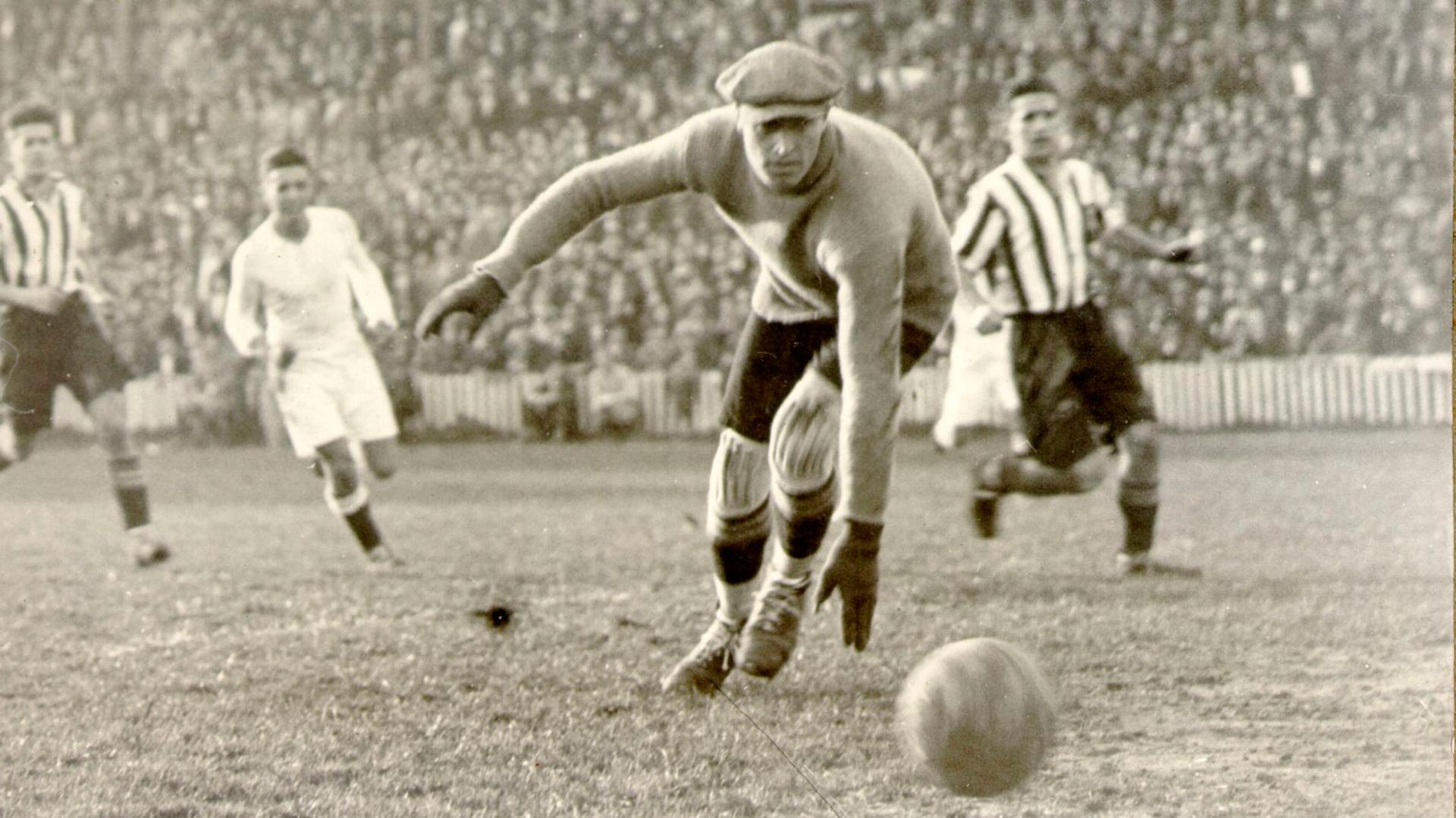
Gregorio Blasco: Athletic Club's first Zamora winner
Gregorio Blasco: Athletic Club's first Zamora winner
This is the story of Goyo Blasco, Athletic's legendary goalkeeper of the 1930's and joint most decorated player in club history
On 10 June 1909, legendary Athletic Club goalkeeper Gregorio 'Goyo' Blasco was born in the Biscayan town of Mundaka. Blasco was the first Athletic shotstopper to win LaLiga and our first Zamora winner.
"We wanted to win the Zamora trophy because of what it means for goalkeeping at Athletic," Ernesto Valverde said after Unai Simón became the first Zurigorri to win the award in decades.
At Athletic, goalkeeping is an art, a responsibility passed down from generation to generation. Almost nothing encapsulates that sense of pride in the position better than lifting the Zamora, the trophy given to the LaLiga keeper with fewest goals conceded over a season.
Five Lions have won the award: Unai Simón, Jose Angel Iribar, Raimundo Lezama, Jose Maria Echvarría and Goyo Blasco.
Wearing his standard black turtleneck jumper, knee pads and a cap, Blasco had great vision and was particularly brave under the high ball, never afraid to come off his line and punch clear.
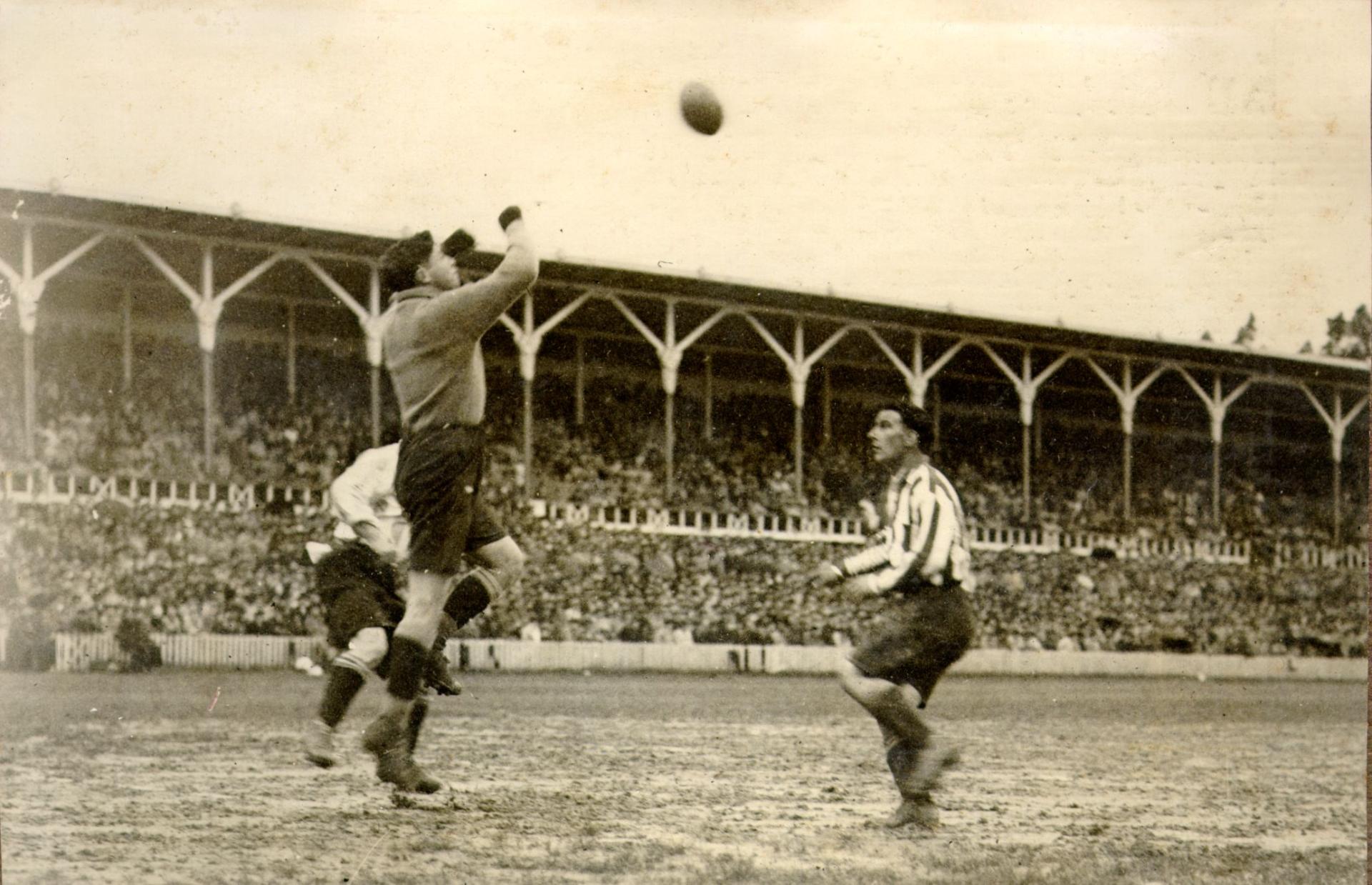
Clearance by Blasco in the 1928 Copa match between Athletic and Alavés (0-0) at San Mames. Photo: AC Museoa.
Initial steps
Curiously, although Blasco preferred to play up front growing up, he got his first taste as a goalkeeper because his friends would always force him to play between the sticks.
His career started in the youth ranks at Chávarri de Sestao, where he lined up alongside another future Athletic legend in Guillermo Gorostiza, before joining Arenas Club de Getxo. However, Goyo made his professional debut at Acero de Olabeaga.
Signing for Athletic Club
On 12 December 1926, Olabeaga beat Athletic Club 2-0 with Blasco in goal. The shotstopper put in a monumental performance and the Lions quickly snapped him up.
Barely half a year later, he made his Athletic debut in a friendly against Swansea City on 22 May 1927, while his first official appearance came in a Regional Championship match against Barakaldo CF the following October.
Gregorio was Athletic's no.1 for a further 11 seasons and 203 matches (113 in LaLiga, 47 in the Copa and 43 in the Regional Championship).
At the start of 1929, Blasco was the club's starting keeper during the Lions' first campaign in the newly-created LaLiga and soon became a standout player.
Goyo lifted the league title four times (1929/30, 1930/31, 1933/34 and 1935/36), and he was the shotstopper with fewest goals conceded on three occasions (1929/30, 1933/34 and 1935/36), for which he was retroactively awarded the Zamora Trophy - to this day no other Athletic keeper has won it more often than Blasco.
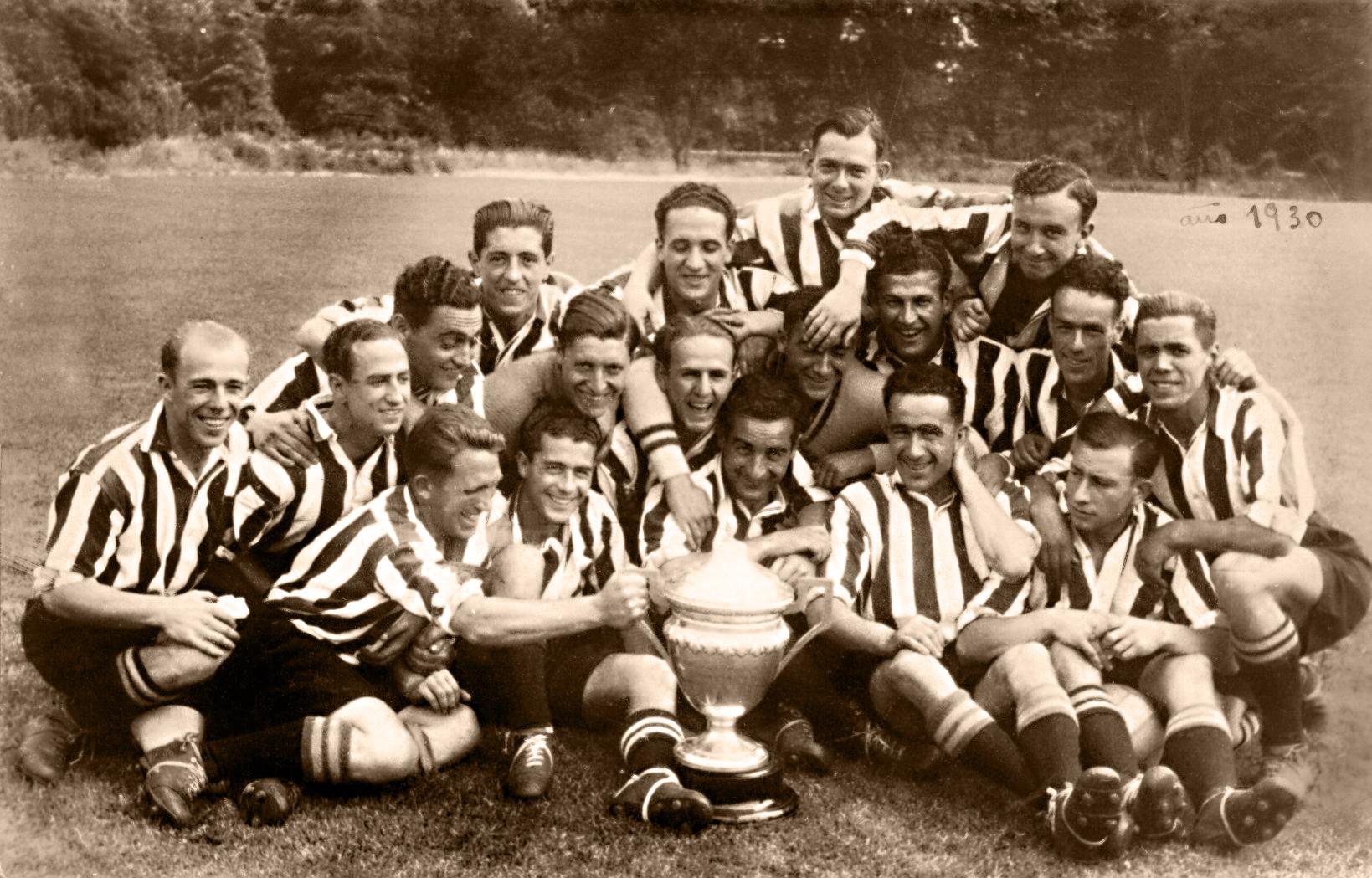
Athletic squad with the 1930 Copa. Photo: AC Museoa.
As if that were not enough, he can also boast four Copas (1929/30, 1930/31, 1931/32 and 1932/33) and seven Regional Championships (1927/28, 1928/29, 1930/31, 1931/32, 1932/33, 1933/34 and 1934/35).
With a total of 15 titles to his name, Blasco is the joint most decorated player in Athletic history along with Gorostiza, Roberto Etxebarria and Jose Luis Ispizua. These successes turned Blasco into a club legend as he put down the blueprints for what makes a great Athletic keeper.
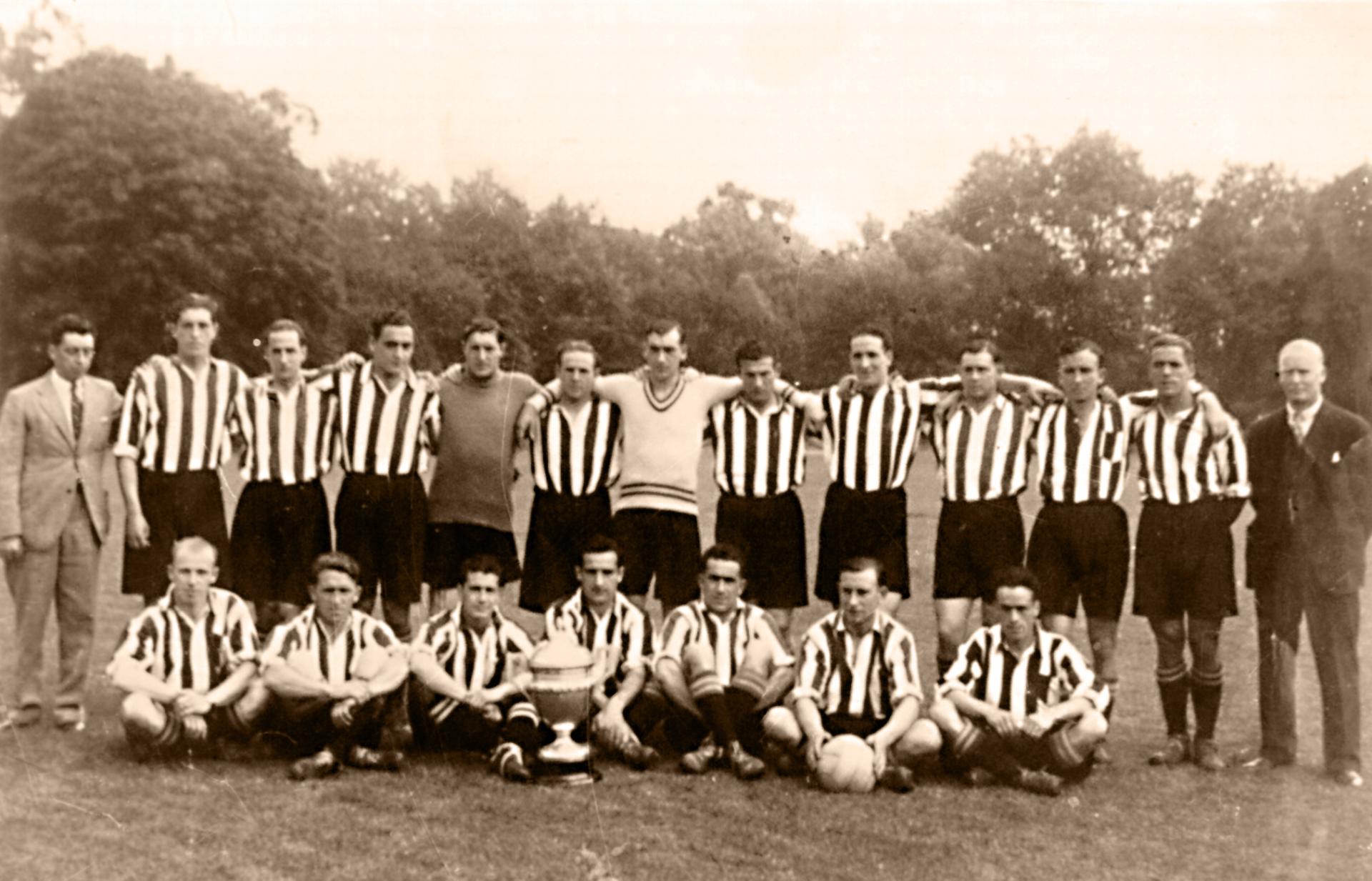
The Athletic squad poses in Torremadariaga after winning the Copa for three consecutive years. 2 July 1932. Standing: P. Birichinaga, José Muguerza, Aguirrezabala, Luis Mª Uribe, Blasco, Gorostiza, Ispizua, Lafuente, Unamuno, Petreñas, Garizurieta, Iraragorri, Mr. Pentland. Seated: Careaga, Urquizu, Castellanos, Roberto Echevarria, Bata, Cilaurren, Demetrio Felipés. Photo: AC Museoa.
Forced into exile
If it weren't for the outbreak of the Spanish Civil War, Blasco could have added more medals to his cabinet. However, like many other Basques, he was forced to emigrate and change continents.
Goyo toured the world with the Basque national team set up to raise awareness and funds during the war. Eventually the team settled in Mexico where they competed in the first division as Club Deportivo Euzkadi. After the war ended, CD Euzkadi was dissolved and Blasco signed for another Mexican outfit, Real Club España.
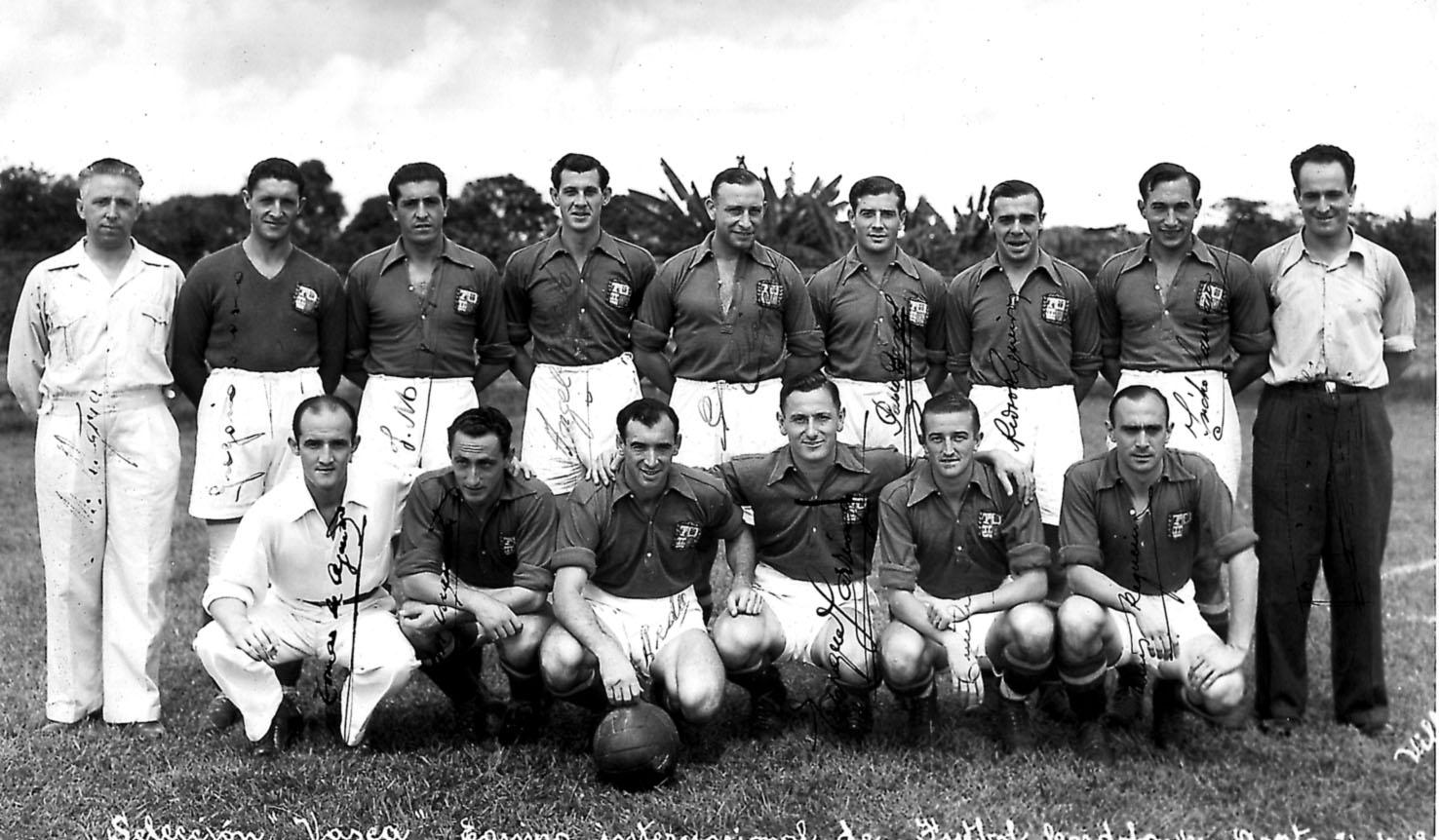
Euskadi national team line-up in Mexico, late 1930s. Standing: Melchor Alegría, Gregorio Blasco, José Mugerza, Ángel Zubieta, Leonardo Cilaurren, Pablo Barcos, Pedro Regueiro, Isidro Langara, Joaquín Rezola. Seated: Tomás Aguirre, José Manuel Urquiola, Serafín Aedo, Enrique Larrinaga, Emilio Alonso, Luis Regueiro. Photo: AC Museoa.
His talent soon captured the attention of South America's biggest sides. In 1940, he moved to Buenos Aires to play for River Plate, where he is remembered for being the first goalkeeper to wear gloves. In fact, he received the nickname "The Electrcian" due to his mitts resembling those worn by cablers at the time.
In the closing stages of his career, Blasco returned to Mexico to play for Atlante FC, but a fractured little finger forced him to retire at the age of 37.
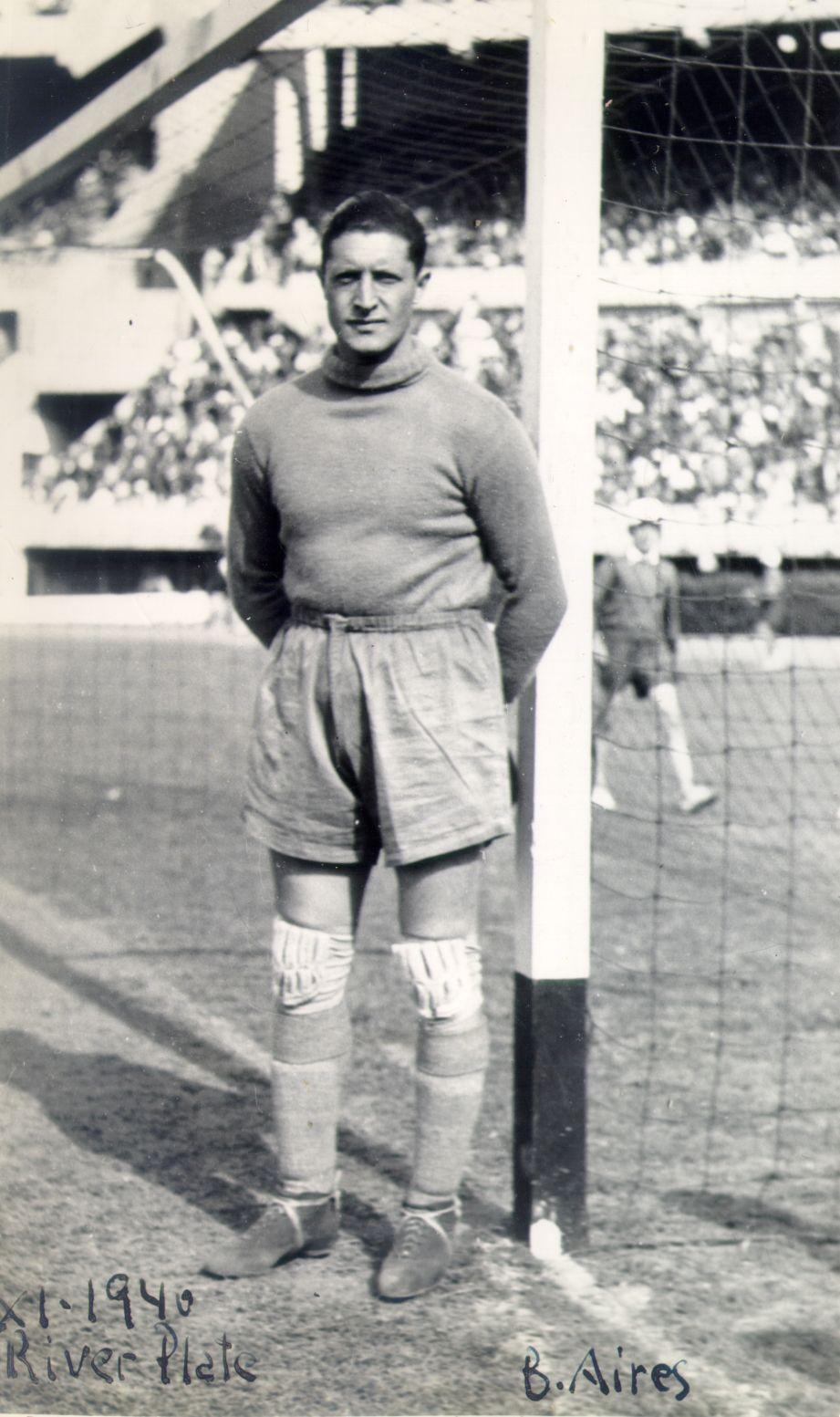
Gregorio Blasco playing for Argentinian champions River Plate in 1940. Photo: AC Museoa.
Blasco's family legacy
Gregorio Blasco passed away on 31 January 1983. His life and achievements left a legacy which goes beyond the pitch. In 1998, Blasco's children and grandchildren, who had settled in Mexico, set up an official supporters' group in the country, called Peña Mexico Athletic Club.
Goyo is also remembered fondly in his native Mundaka, the beautiful coastal town where they recently named a street in his honour close to the house he grew up in.
